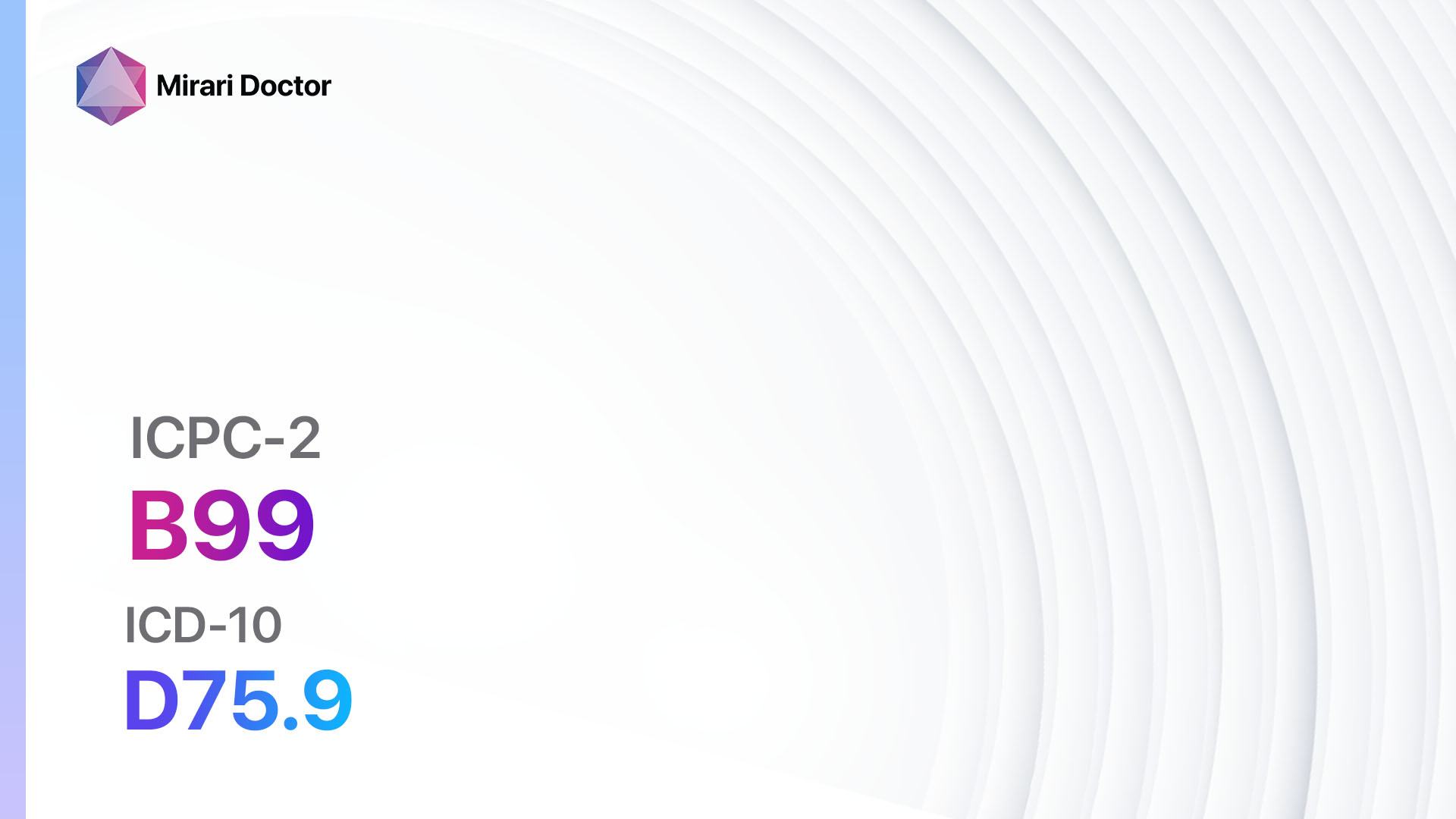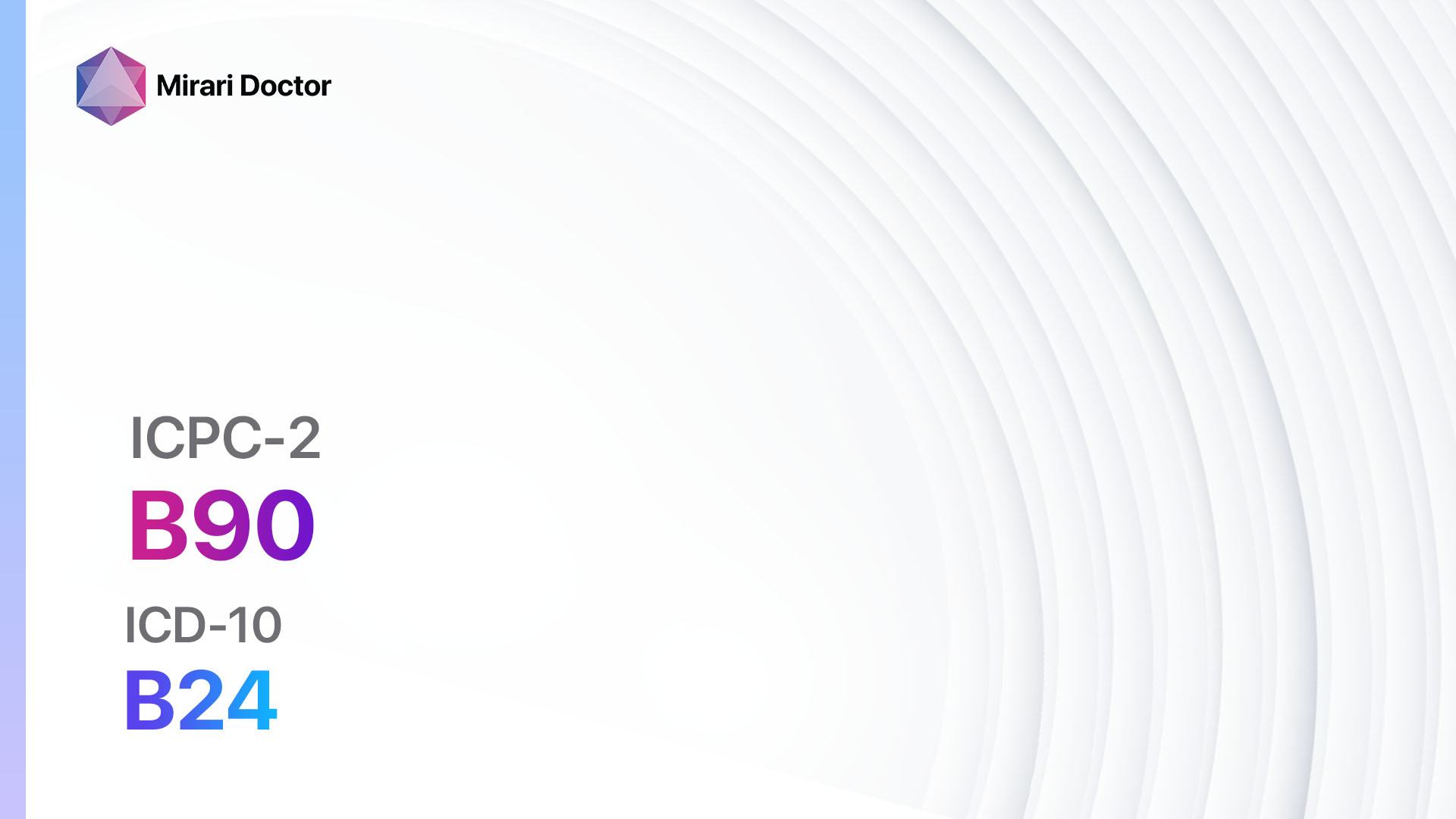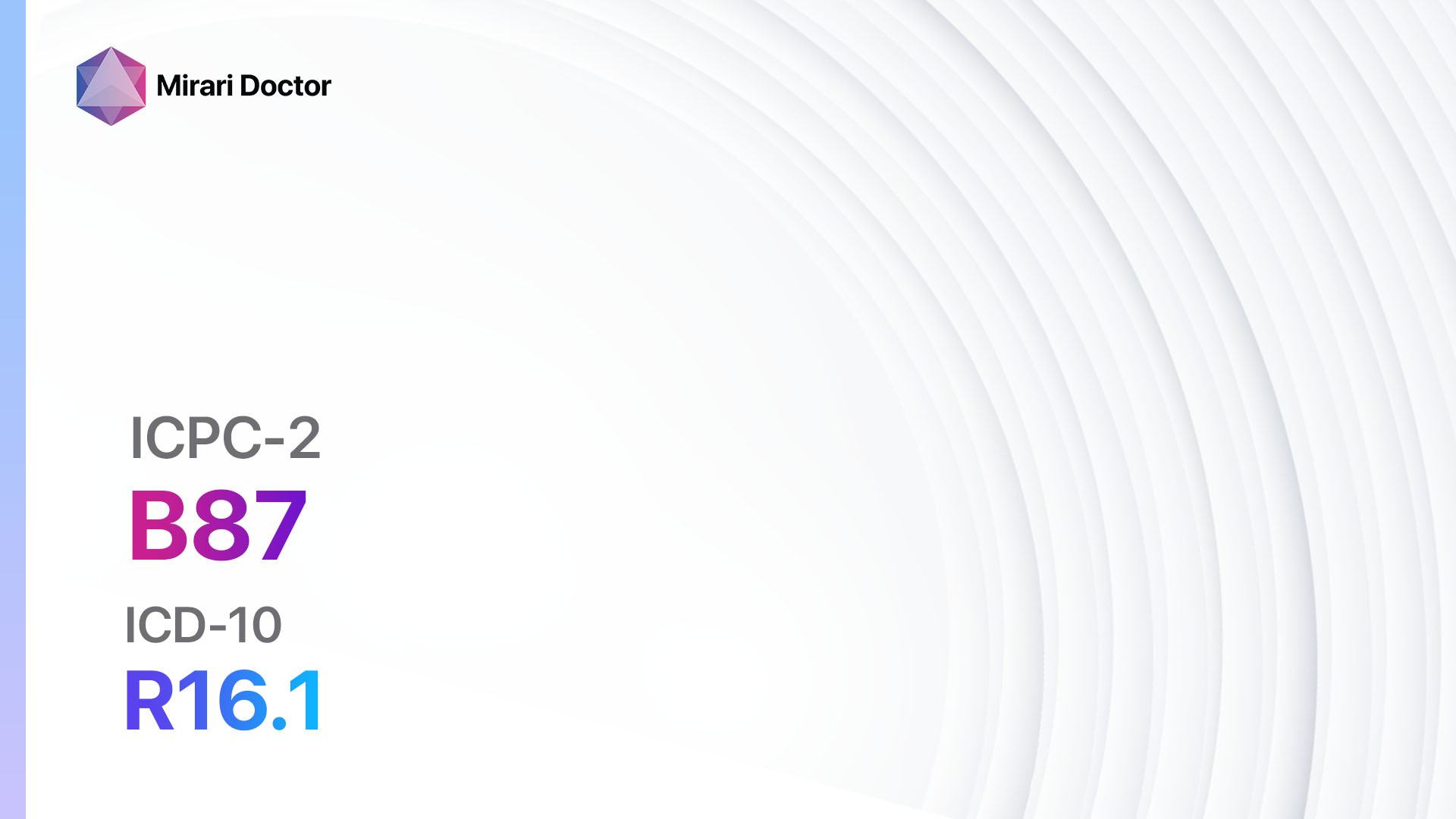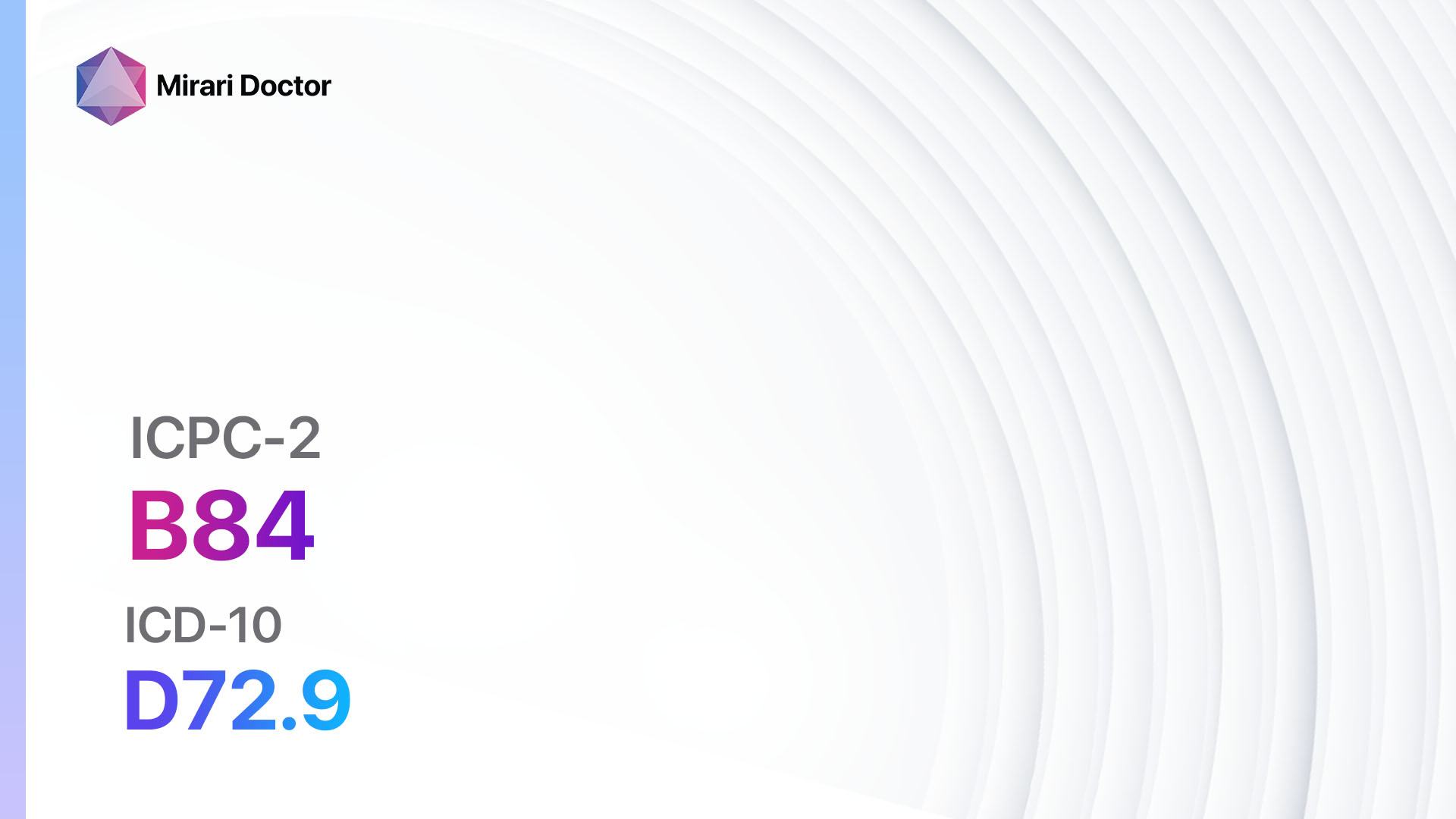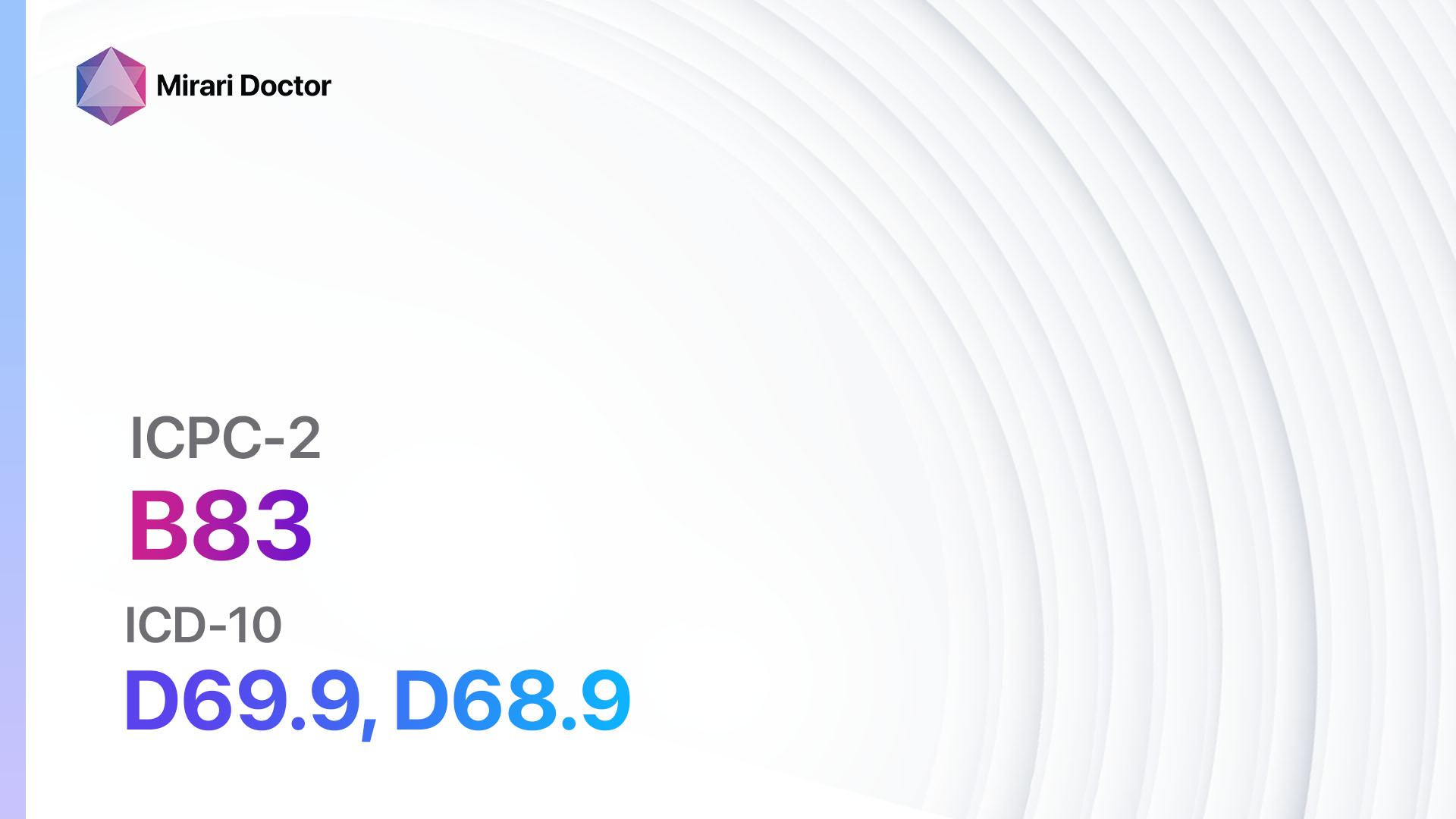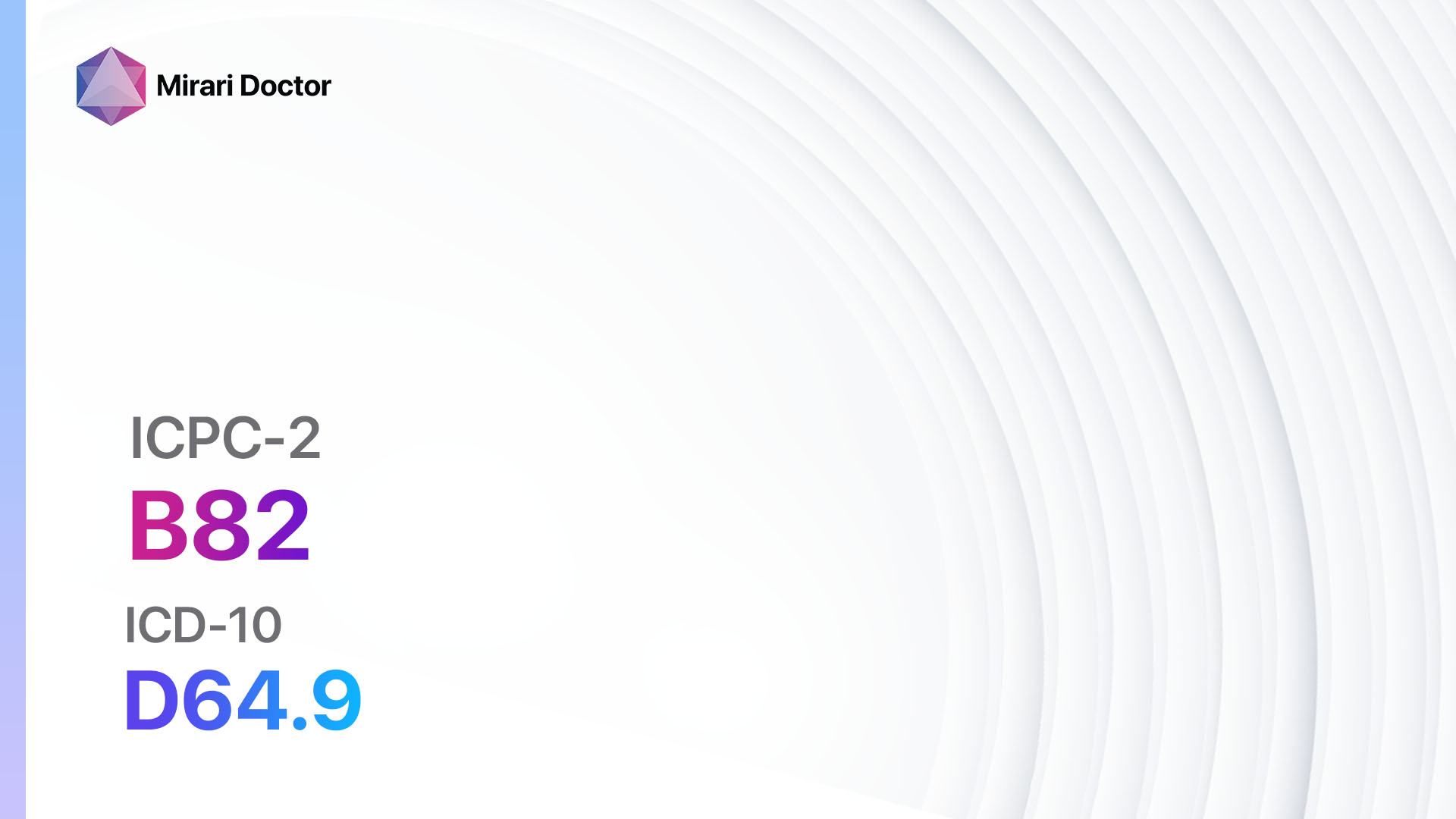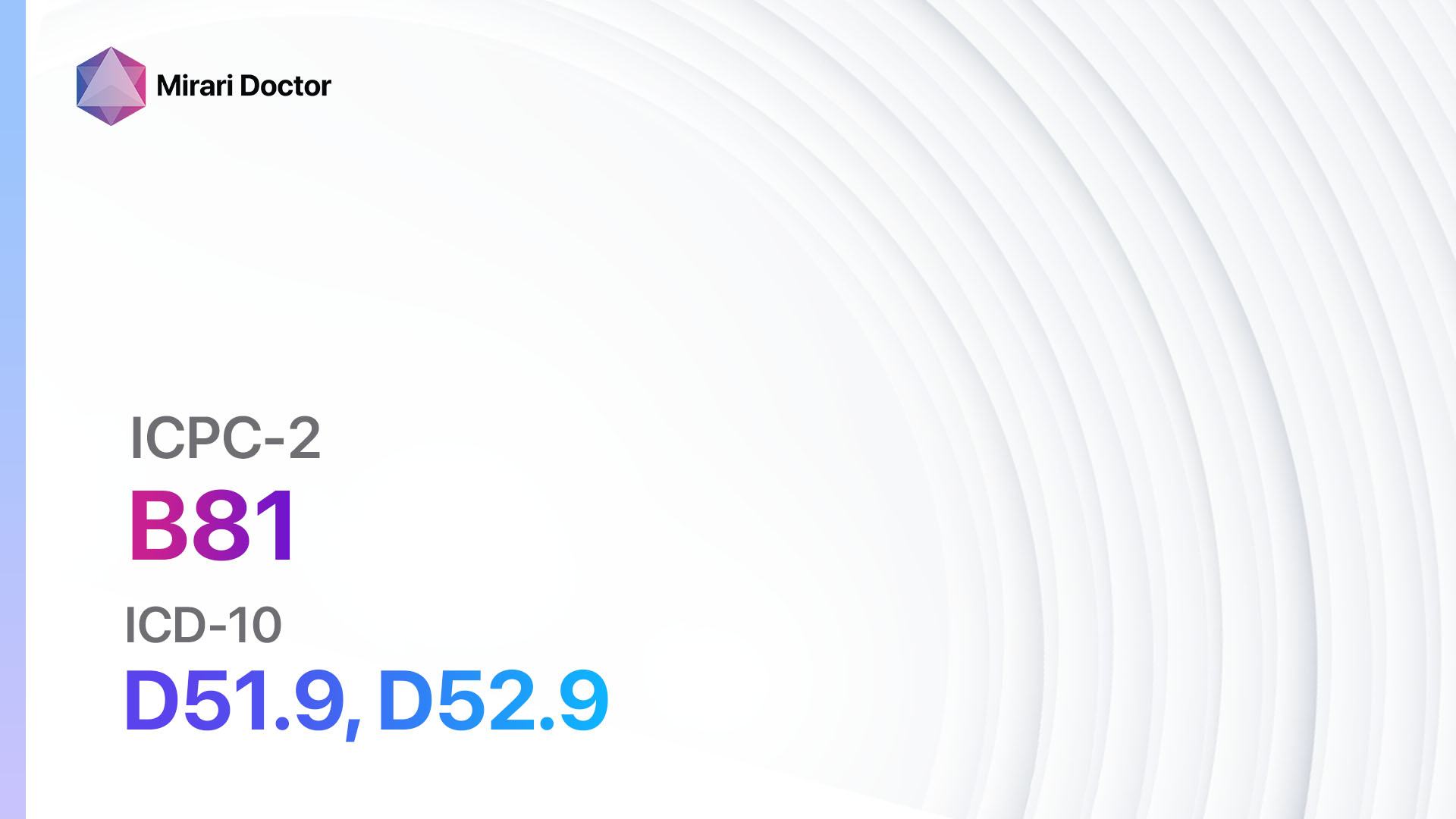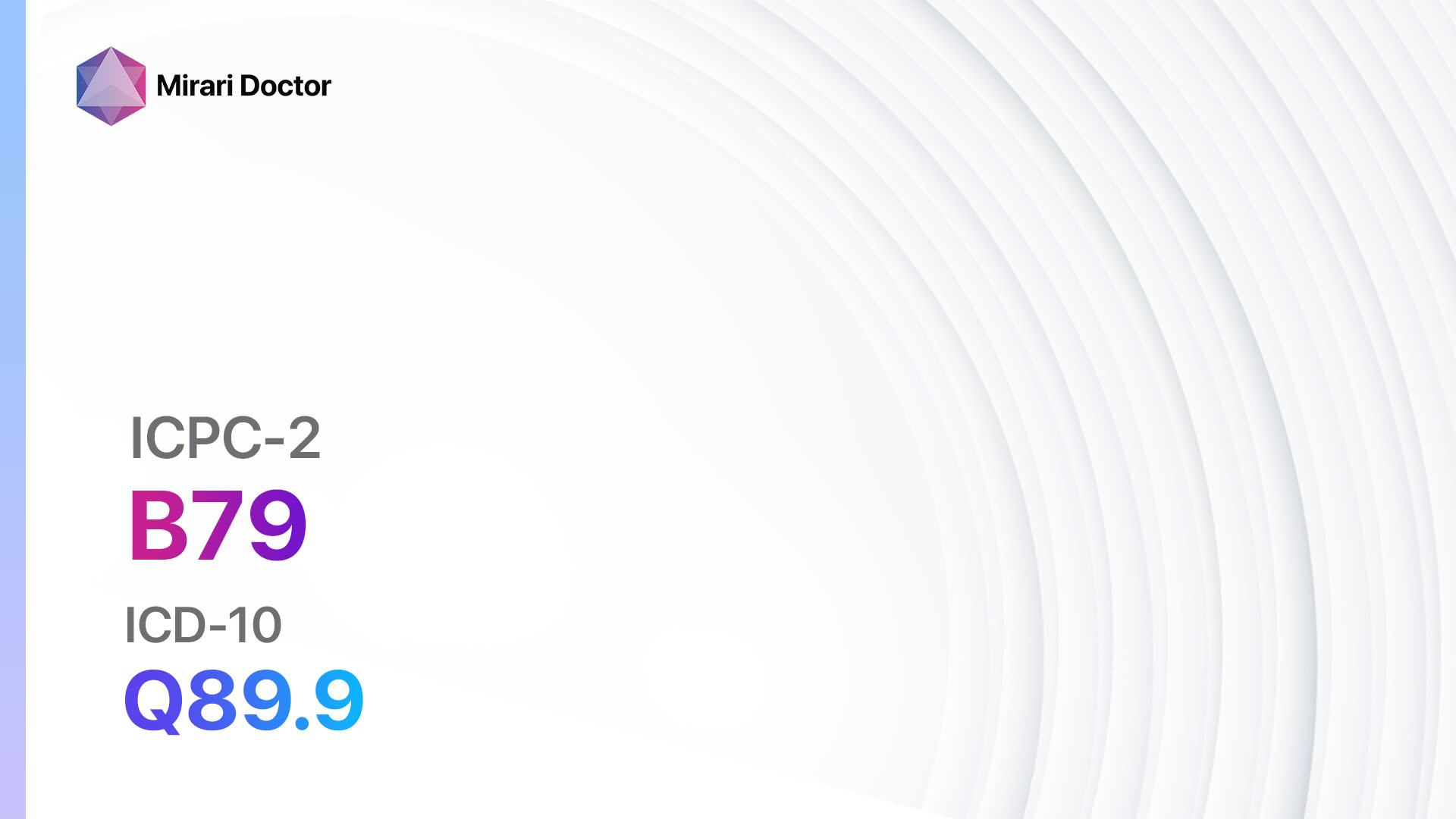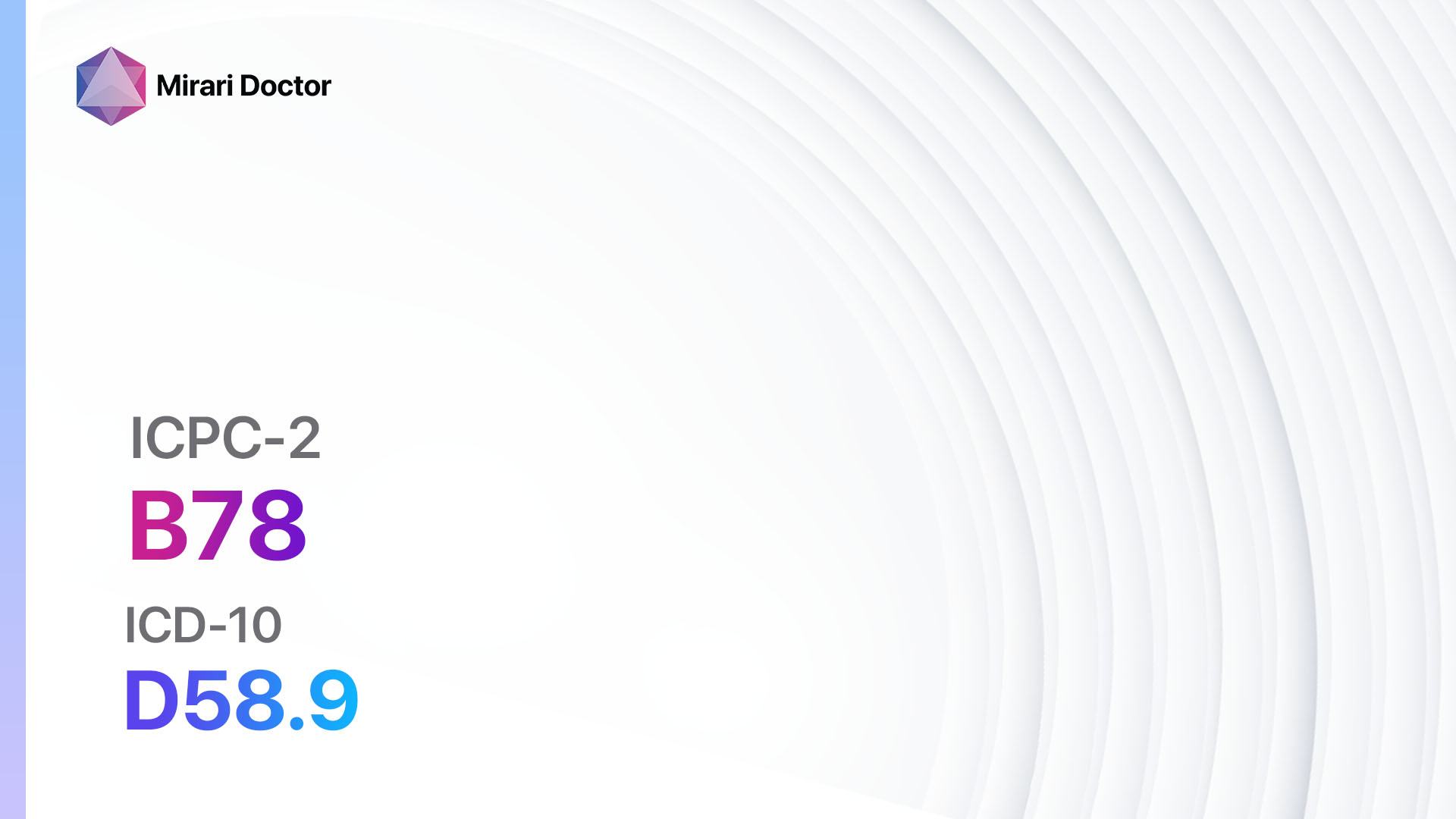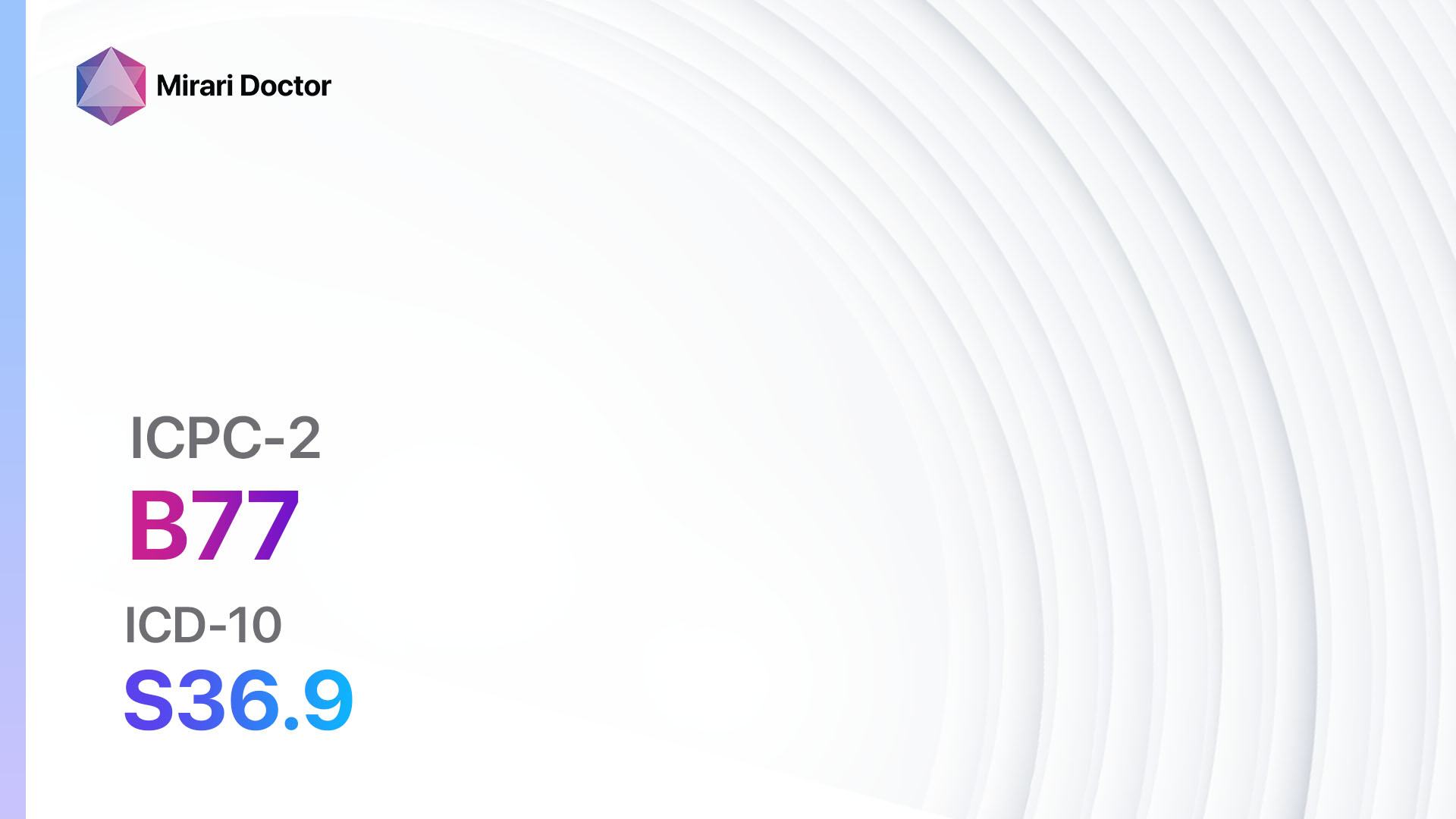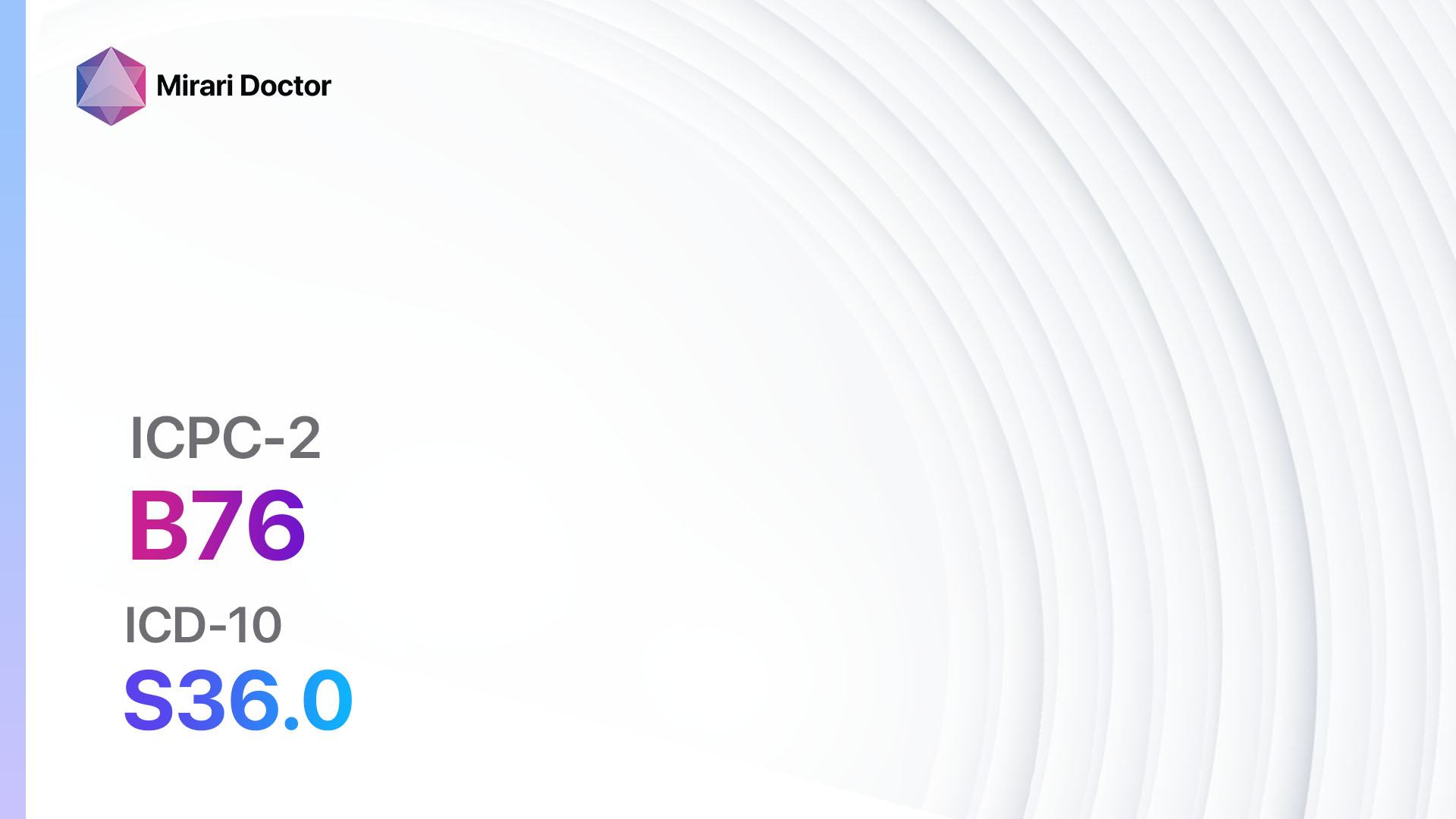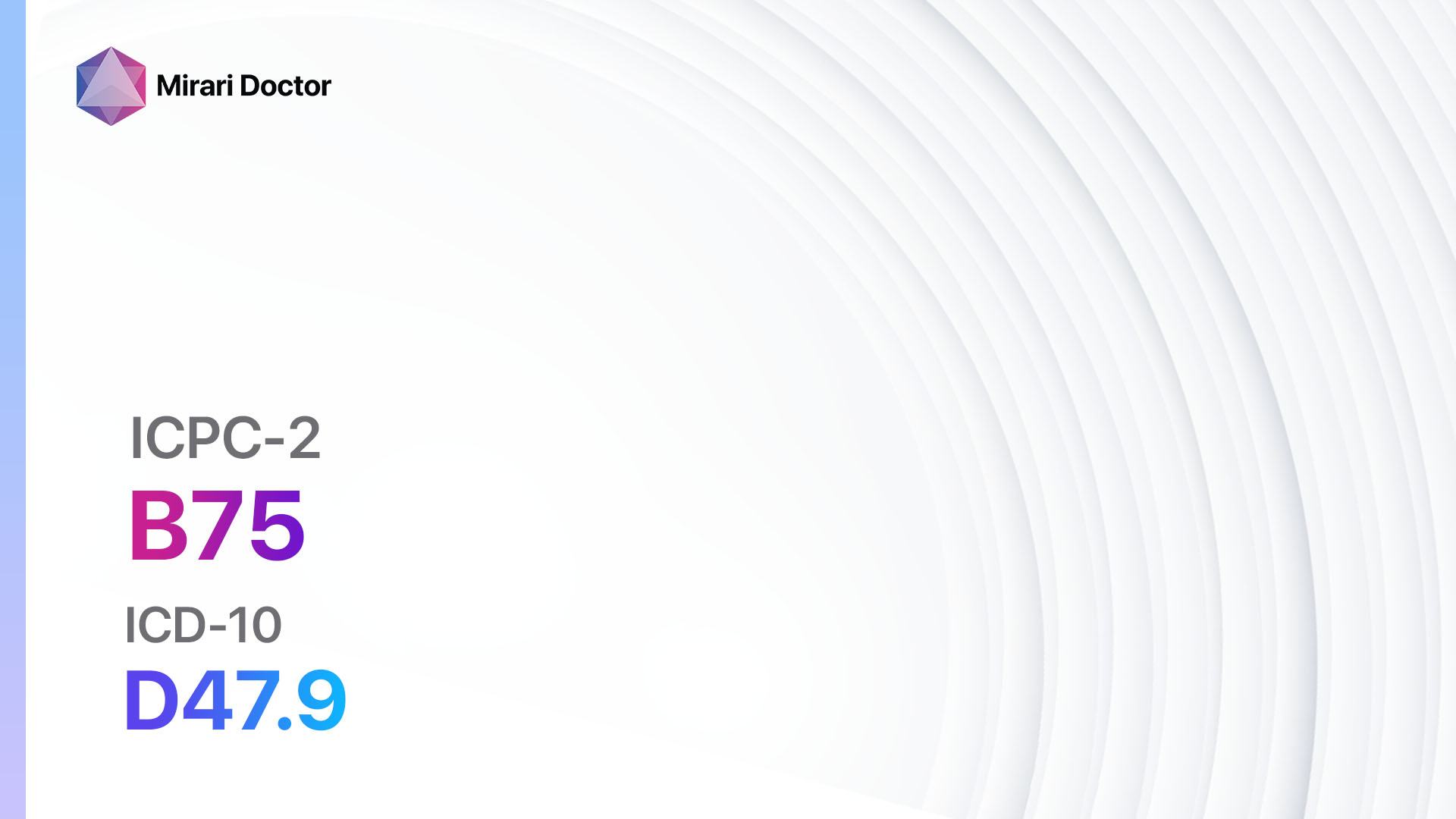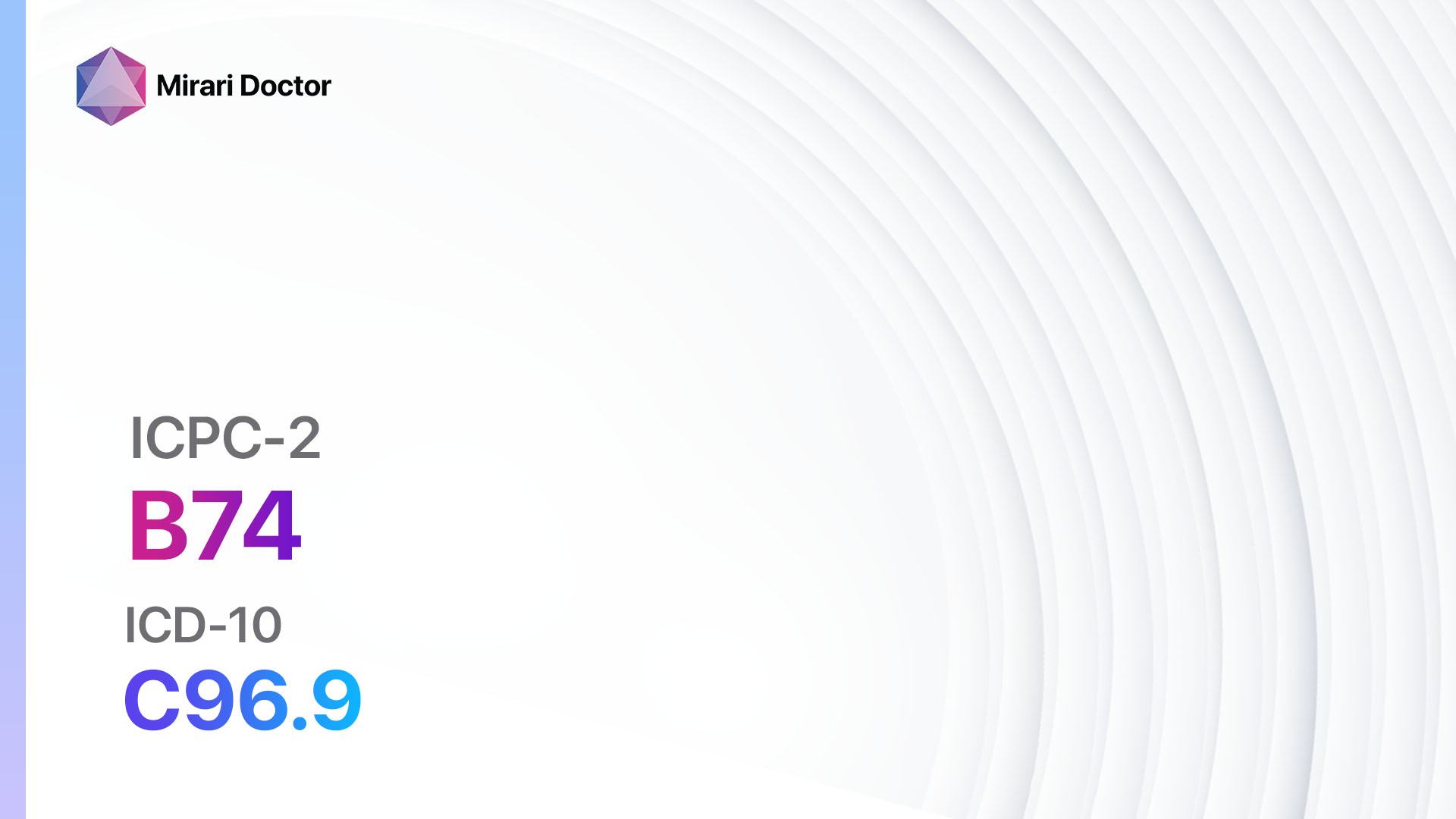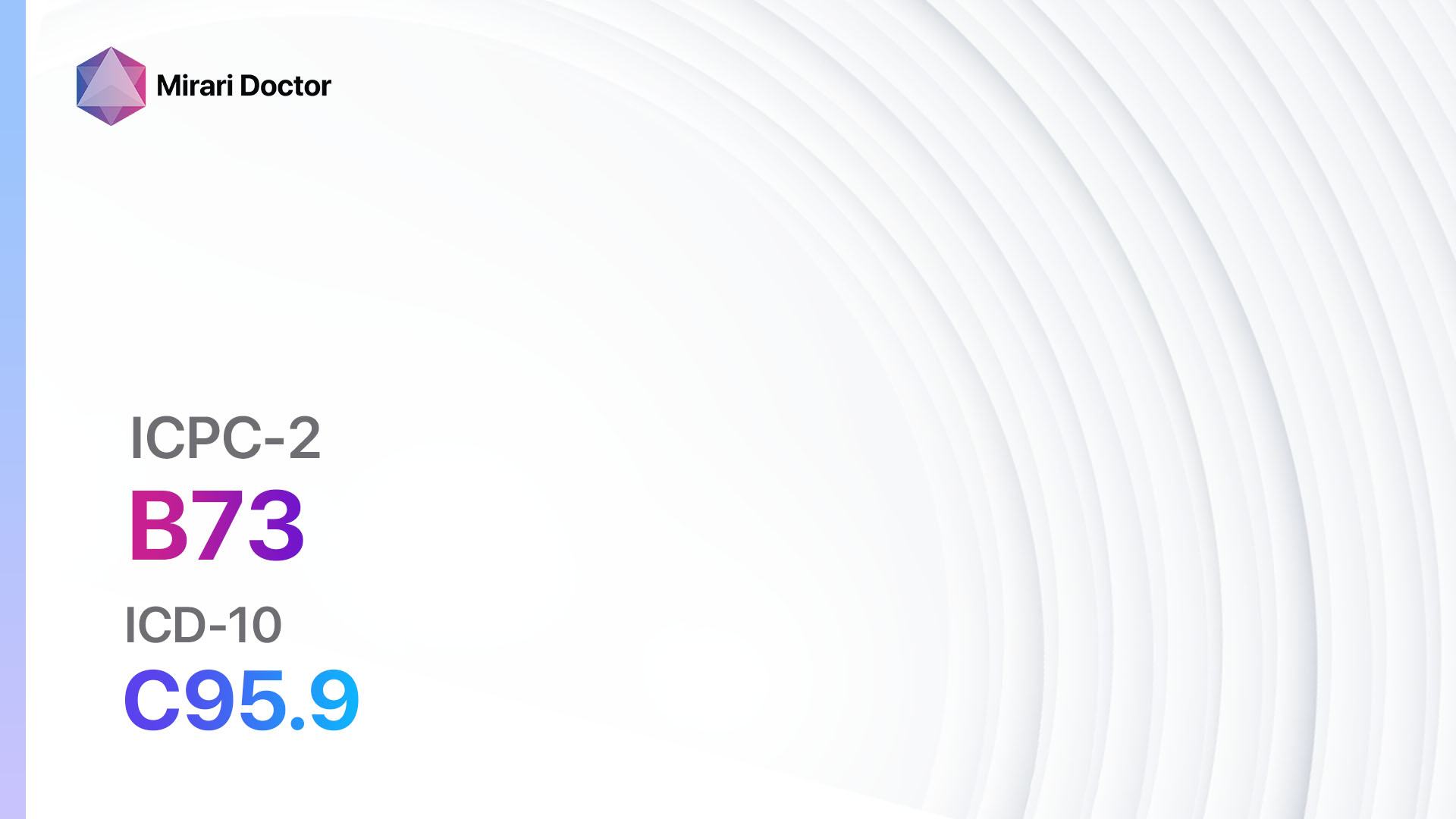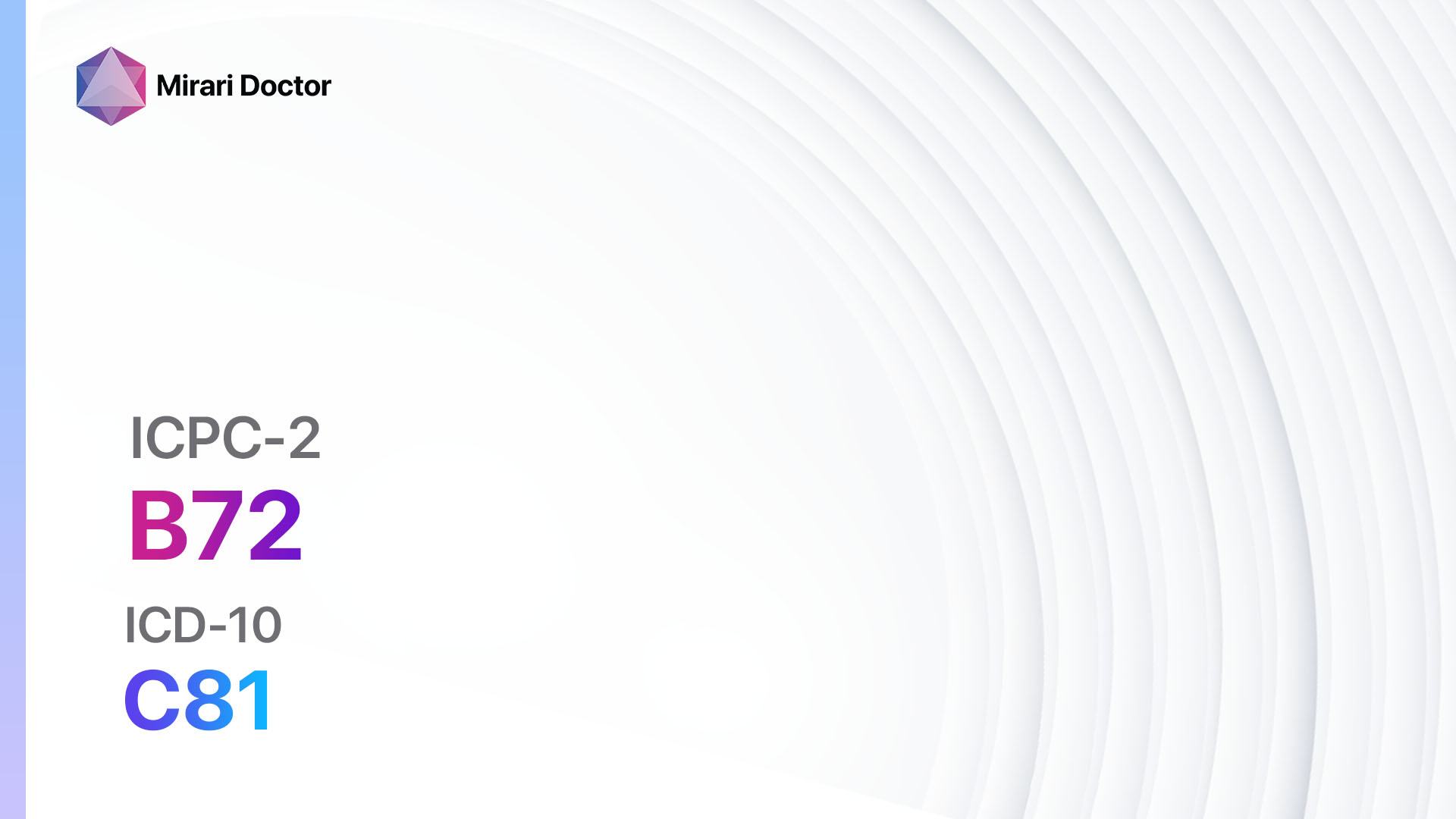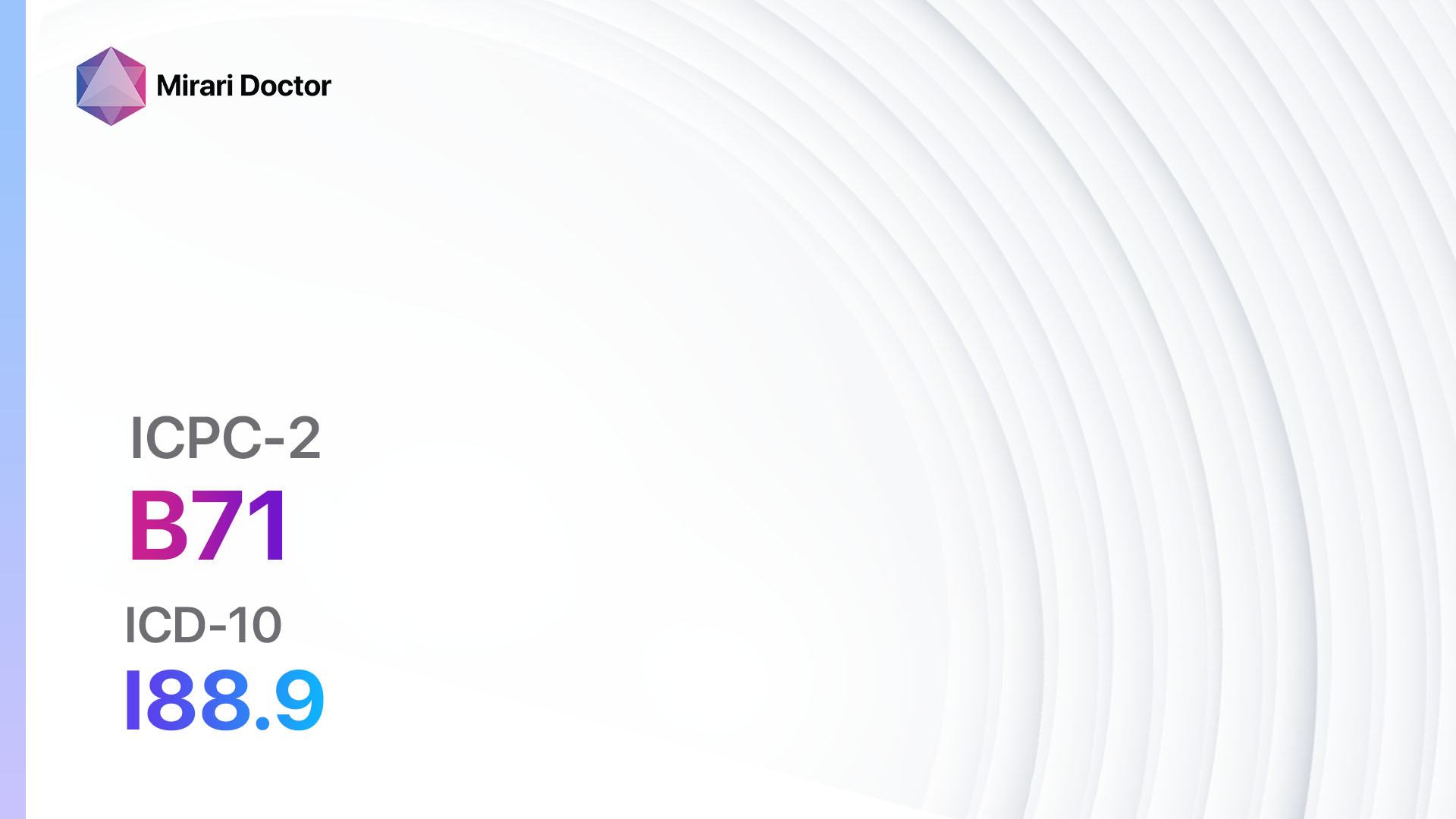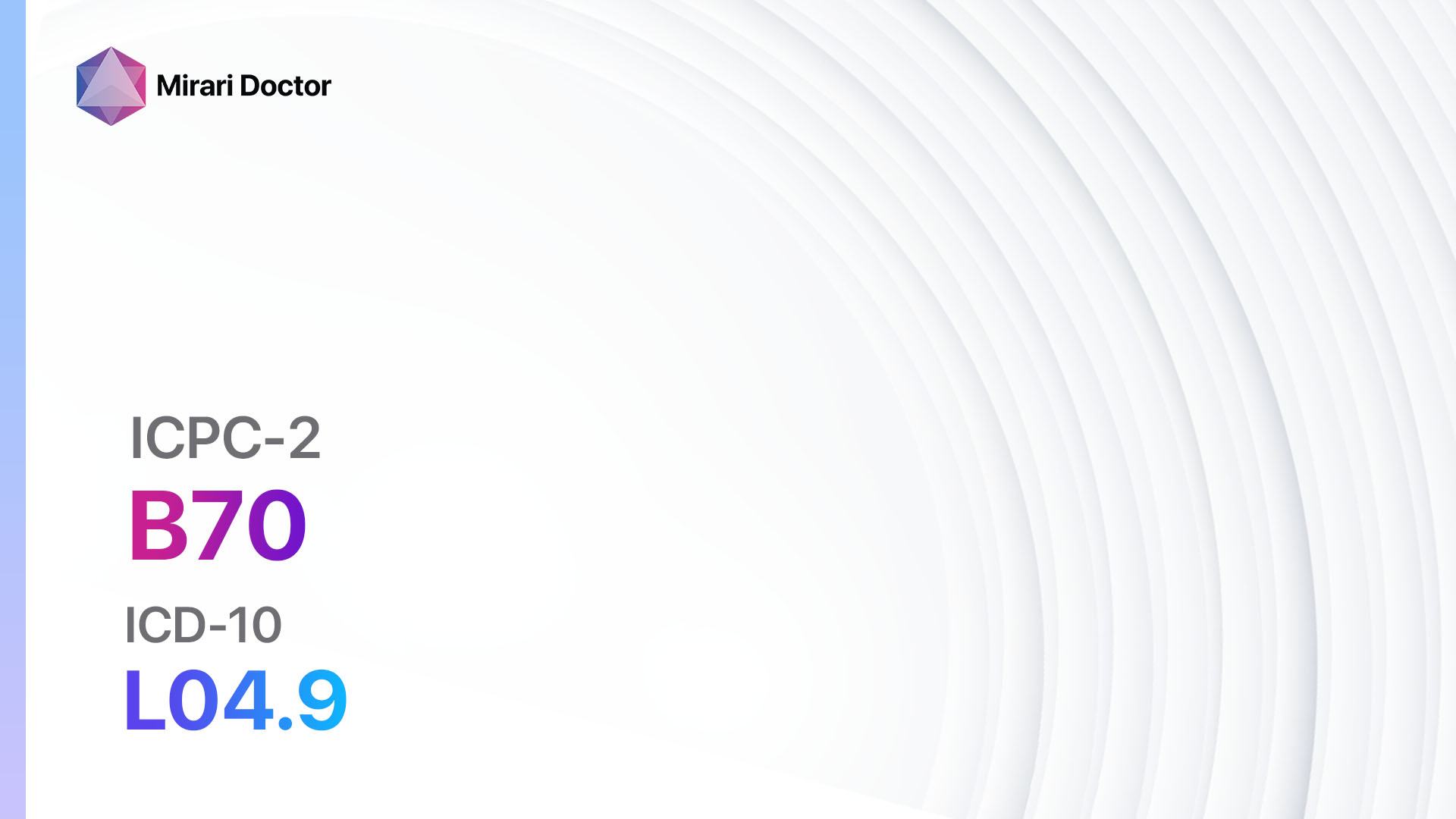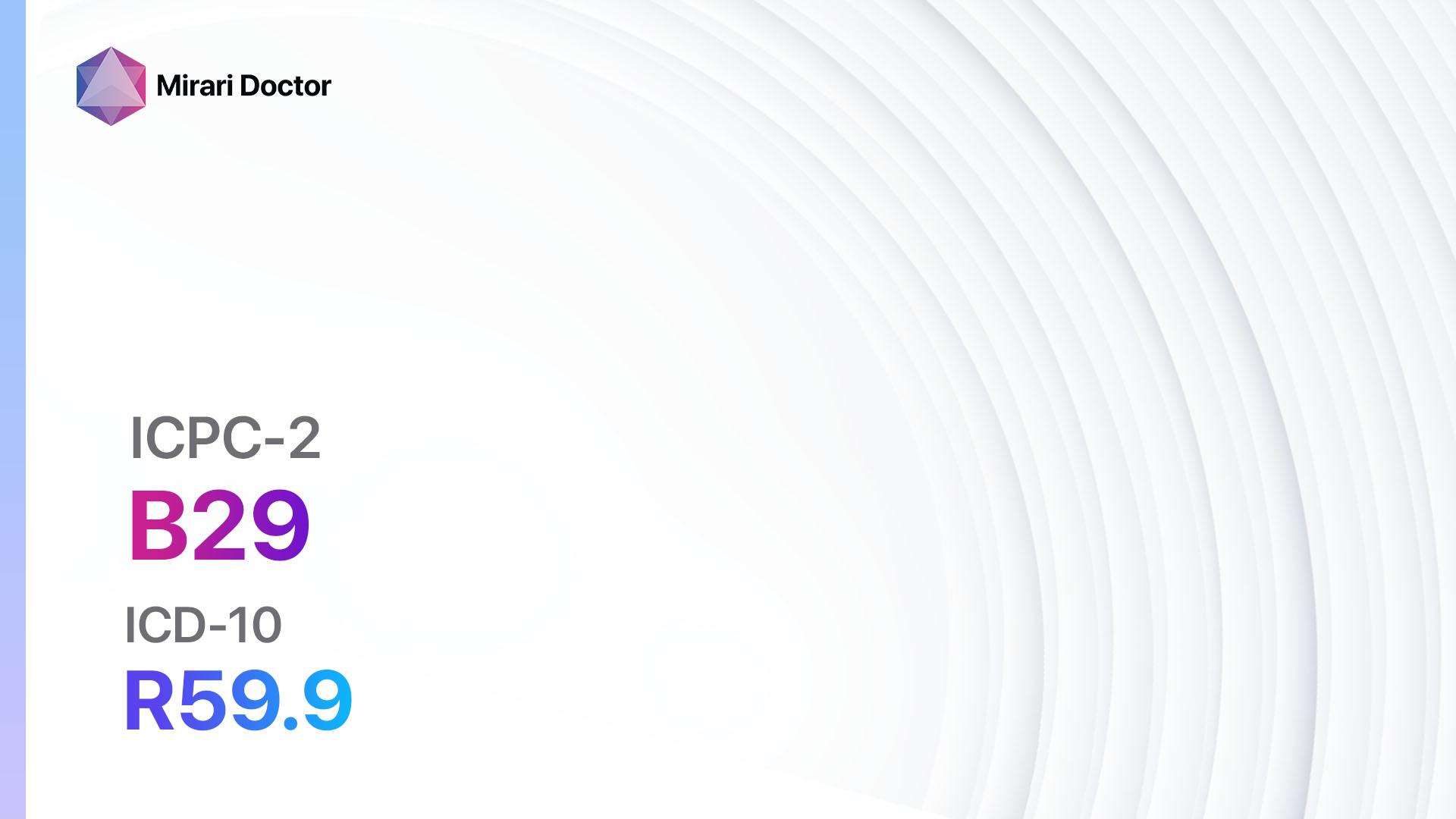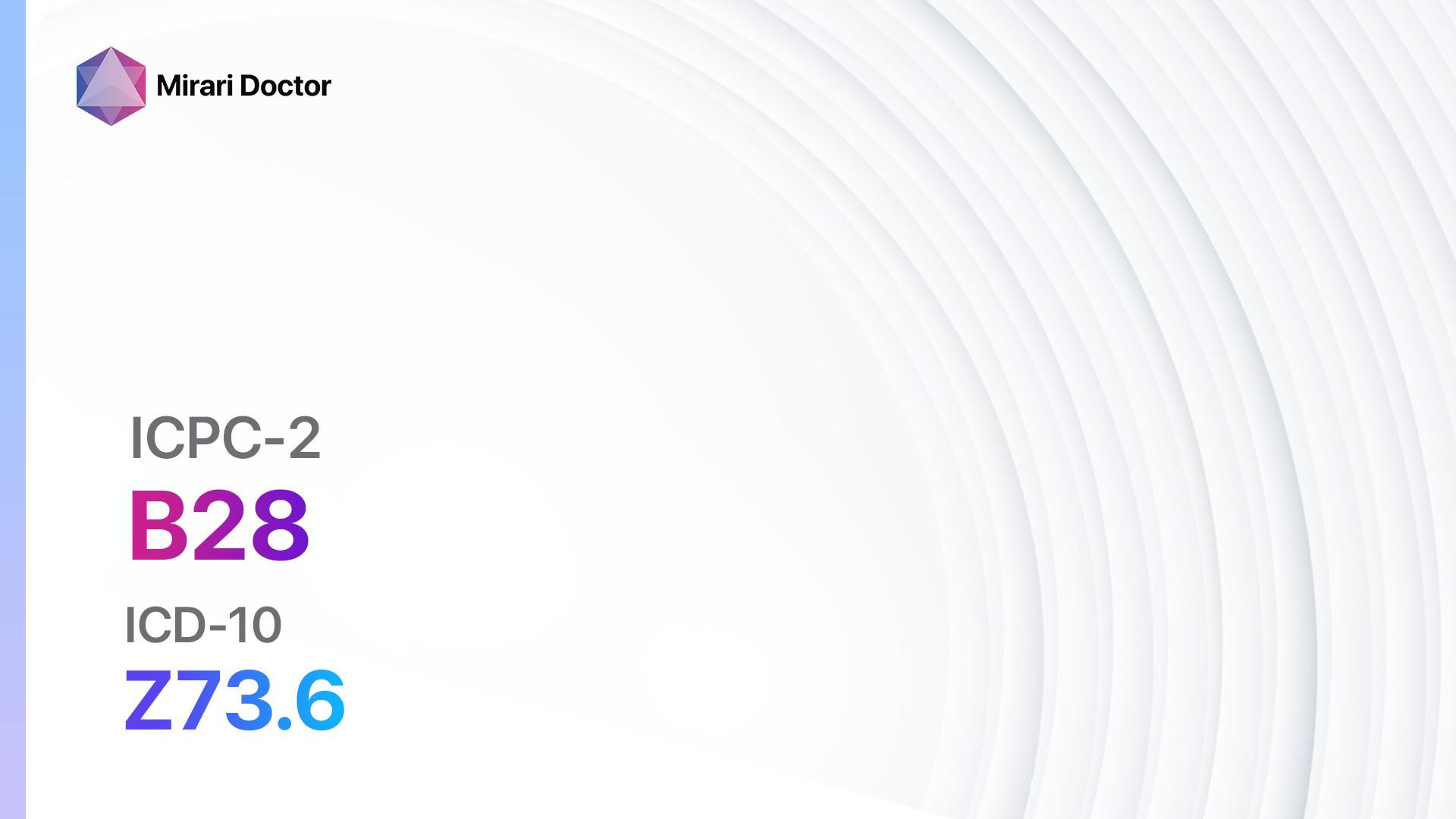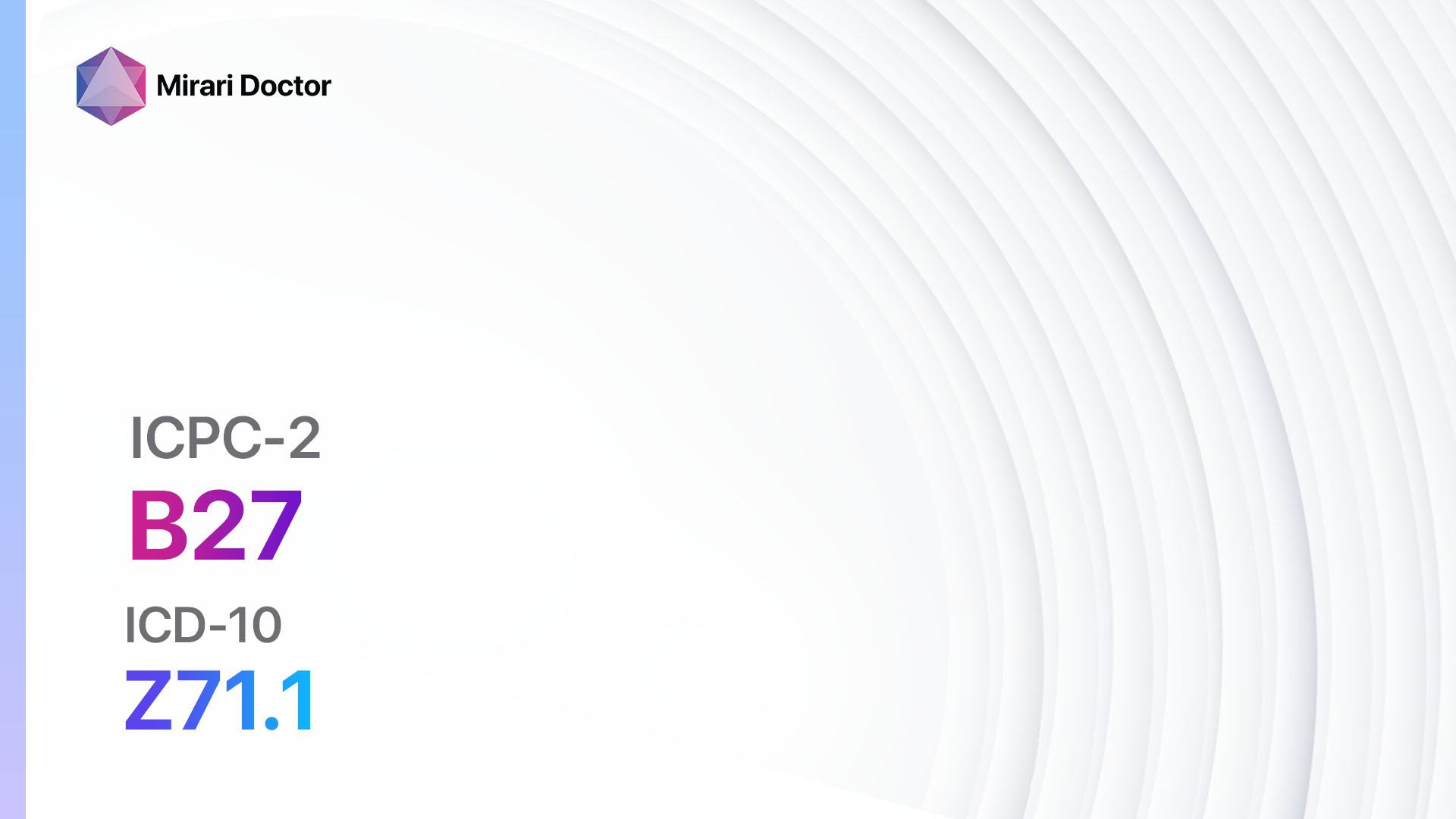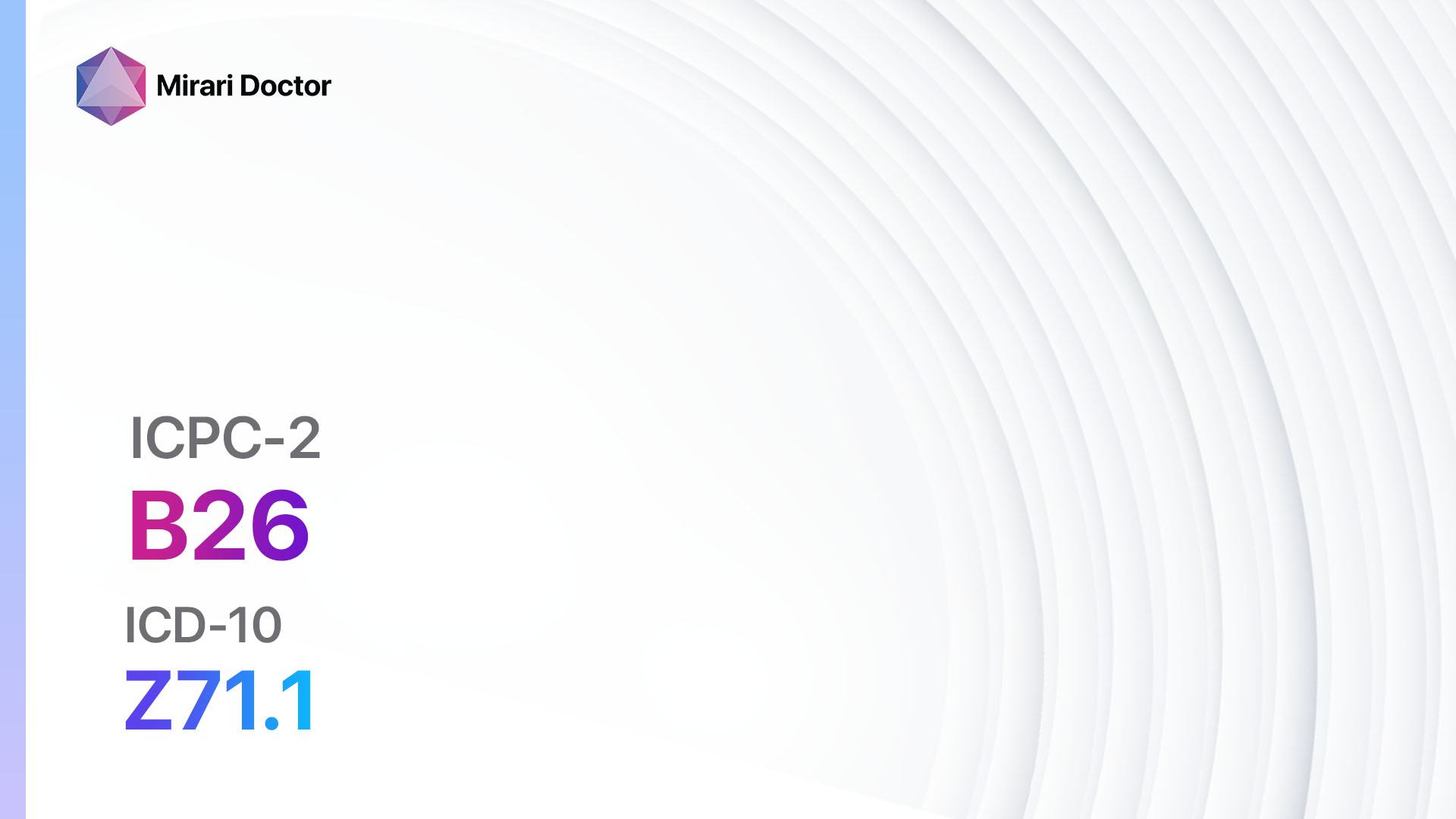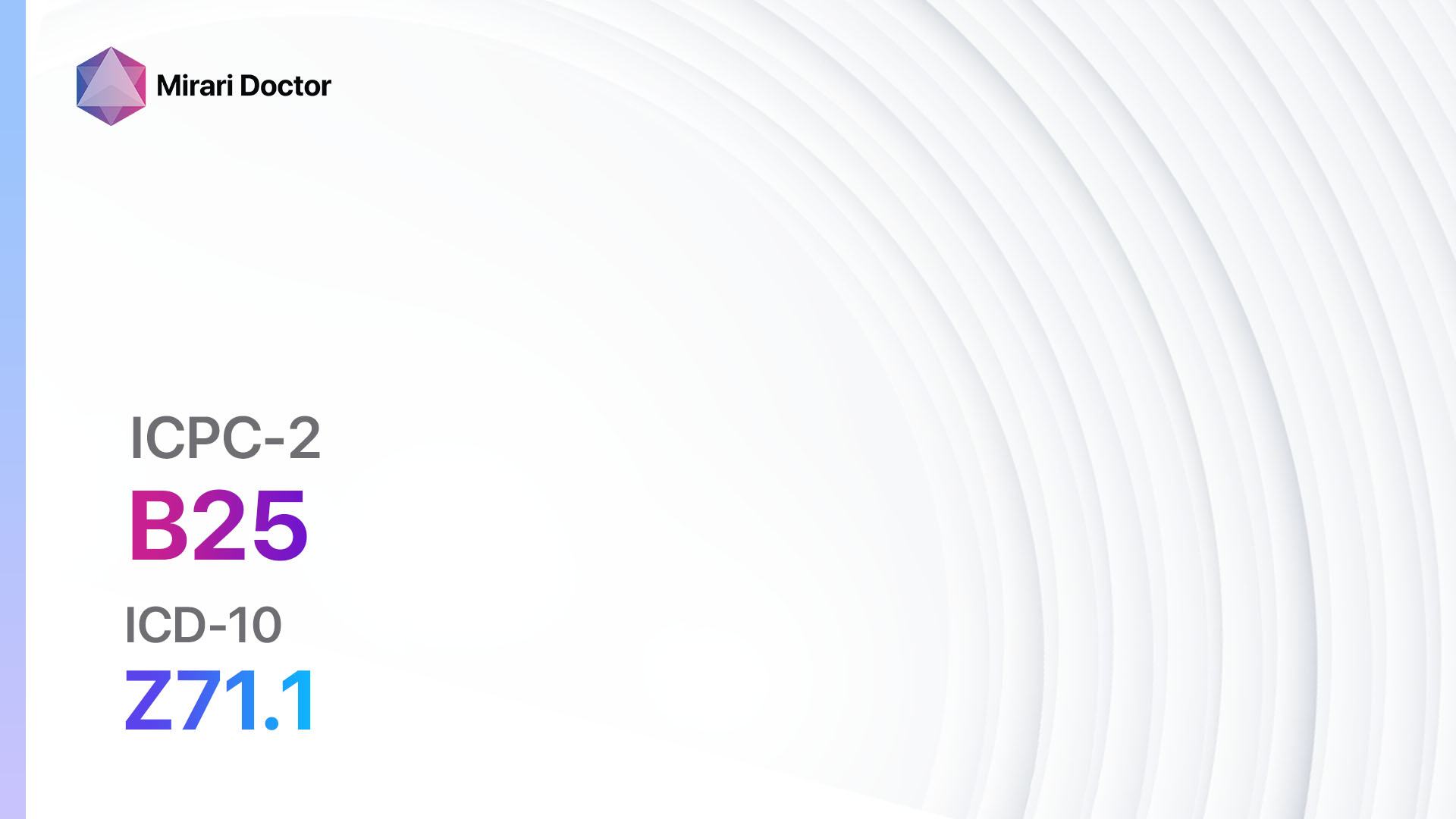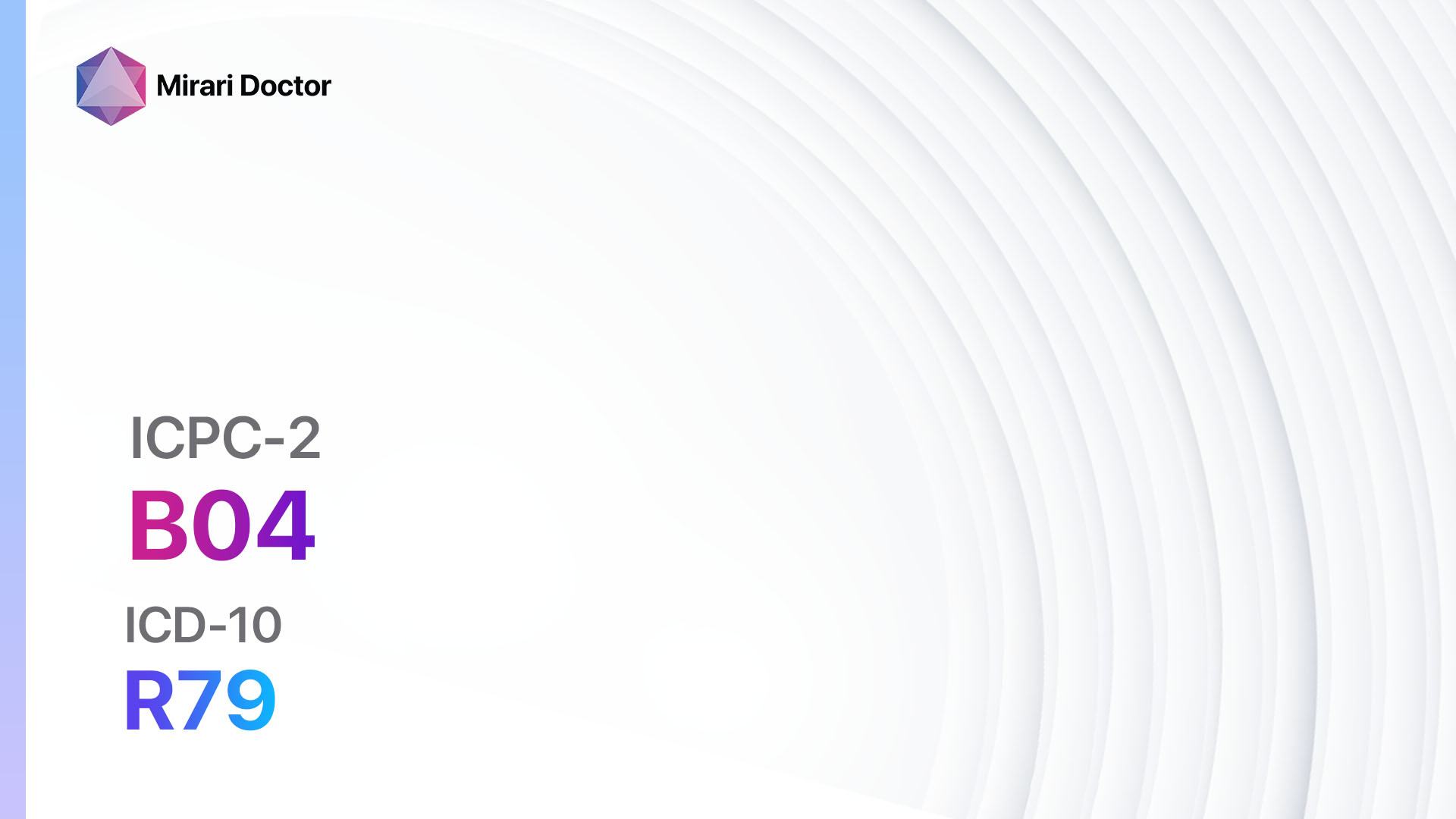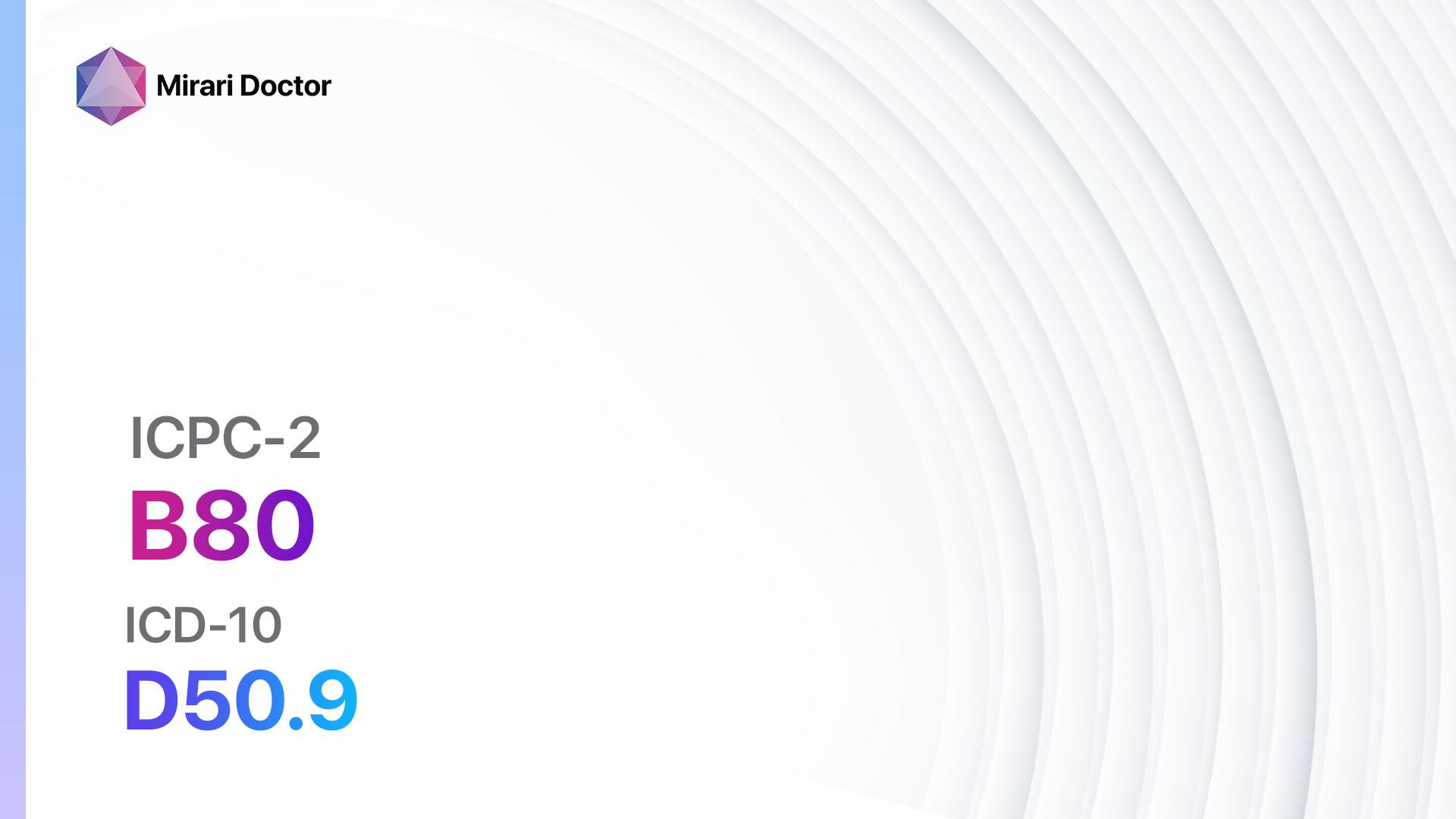
Introduction
Iron deficiency anemia is a condition characterized by a decrease in the number of red blood cells or a decrease in the amount of hemoglobin in the blood due to insufficient iron levels[1]. Iron is essential for the production of hemoglobin, which carries oxygen to the body’s tissues[2]. Iron deficiency anemia can lead to fatigue, weakness, and other symptoms[3]. The aim of this guide is to provide an overview of the symptoms, causes, diagnostic steps, possible interventions, and patient education for iron deficiency anemia.
Codes
Symptoms
- Fatigue: Feeling tired and lacking energy[4].
- Weakness: Reduced strength and stamina[4].
- Pale skin: Skin may appear pale or have a yellowish tinge[4].
- Shortness of breath: Difficulty breathing or feeling breathless[4].
- Headaches: Frequent or severe headaches[4].
- Dizziness: Feeling lightheaded or faint[4].
- Cold hands and feet: Extremities may feel cold to the touch[4].
- Brittle nails: Nails may become brittle and break easily[4].
- Pica: Craving and eating non-food substances, such as ice or dirt[4].
Causes
- Inadequate dietary intake of iron: Not consuming enough iron-rich foods[5].
- Poor iron absorption: Certain conditions, such as celiac disease or inflammatory bowel disease, can interfere with iron absorption[5].
- Blood loss: Heavy menstrual periods, gastrointestinal bleeding, or other sources of blood loss can lead to iron deficiency[5].
- Pregnancy: Iron requirements increase during pregnancy, and inadequate intake or absorption can result in iron deficiency anemia[5].
- Increased iron needs: Infants, children, and adolescents may require more iron during periods of rapid growth[5].
Diagnostic Steps
Medical History
- Gather information about the patient’s dietary habits, including intake of iron-rich foods[6].
- Inquire about symptoms such as fatigue, weakness, and shortness of breath[6].
- Ask about any history of gastrointestinal bleeding or heavy menstrual periods[6].
- Assess for any underlying medical conditions that may contribute to iron deficiency anemia[6].
Physical Examination
- Check for signs of pale skin, including inside the lower eyelids and nail beds[6].
- Assess for signs of fatigue or weakness, such as reduced muscle strength[6].
- Listen to the heart and lungs for any abnormalities[6].
- Palpate the abdomen to check tenderness or masses[6].
Laboratory Tests
- Complete blood count (CBC): Measures the number of red blood cells, hemoglobin levels, and other blood cell parameters[7].
- Serum ferritin: Measures the body’s iron stores[7].
- Total iron-binding capacity (TIBC): Measures the amount of transferrin, a protein that transports iron in the blood[7].
- Serum iron: Measures the amount of iron in the blood[7].
- Transferrin saturation: Calculates the percentage of transferrin that is saturated with iron[7].
Diagnostic Imaging
- In most cases, diagnostic imaging is not necessary for the diagnosis of iron deficiency anemia. However, in certain situations, imaging studies may be performed to identify potential sources of blood loss or underlying conditions[8].
Other Tests
- Gastrointestinal endoscopy: If gastrointestinal bleeding is suspected, an endoscopy may be performed to visualize the gastrointestinal tract and identify any sources of bleeding[8].
- Genetic testing: In rare cases, genetic testing may be done to identify inherited causes of iron deficiency anemia[8].
Follow-up and Patient Education
- Follow-up appointments may be scheduled to monitor the patient’s response to treatment and ensure adequate iron levels[9].
- Patient education should focus on the importance of a balanced diet rich in iron, as well as strategies to enhance iron absorption, such as consuming vitamin C-rich foods with iron-rich foods[9].
Possible Interventions
Traditional Interventions
Medications:
Top 5 drugs for Iron deficiency anemia:
- Oral iron supplements (e.g., Ferrous sulfate, Ferrous gluconate):
- Cost: Generic versions can be $3-$10/month.
- Contraindications: Allergy to iron supplements, hemochromatosis.
- Side effects: Upset stomach, constipation, dark stools.
- Severe side effects: Allergic reactions, iron overload.
- Drug interactions: Antacids, tetracycline antibiotics.
- Warning: Iron supplements should be taken on an empty stomach for better absorption.
- Intravenous iron therapy (e.g., Iron sucrose, Ferric carboxymaltose):
- Cost: $100-$500 per infusion.
- Contraindications: Allergy to iron supplements, active infection.
- Side effects: Nausea, headache, dizziness.
- Severe side effects: Anaphylaxis, hypotension.
- Drug interactions: None reported.
- Warning: Intravenous iron therapy may be necessary for patients who cannot tolerate or absorb oral iron supplements.
- Vitamin C supplementation:
- Cost: Generic versions can be $3-$10/month.
- Contraindications: Allergy to vitamin C supplements.
- Side effects: Upset stomach, diarrhea.
- Severe side effects: None reported.
- Drug interactions: None reported.
- Warning: Vitamin C can enhance iron absorption when taken with iron-rich foods or supplements.
- Erythropoiesis-stimulating agents (e.g., Epoetin alfa, Darbepoetin alfa):
- Cost: $100-$500 per injection.
- Contraindications: Uncontrolled hypertension, pure red cell aplasia.
- Side effects: Hypertension, headache, joint pain.
- Severe side effects: Thrombosis, pure red cell aplasia.
- Drug interactions: None reported.
- Warning: Erythropoiesis-stimulating agents may be used in certain cases of severe iron deficiency anemia.
- Blood transfusion:
- Cost: $200-$500 per unit of blood.
- Contraindications: None, but reserved for severe cases or acute blood loss.
- Side effects: Allergic reactions, infection transmission.
- Severe side effects: Transfusion-related acute lung injury (TRALI), hemolytic reactions.
- Drug interactions: None reported.
- Warning: Blood transfusion is typically reserved for patients with severe iron deficiency anemia or acute blood loss.
Alternative Drugs:
- Herbal supplements (e.g., Spirulina, Nettle leaf): Some herbal supplements may contain iron and can be used as an alternative to traditional iron supplements. Cost: Varies depending on the specific supplement.
- Iron-rich foods: Encourage the consumption of iron-rich foods, such as lean meats, beans, spinach, and fortified cereals. Cost: Varies depending on individual dietary choices.
Surgical Procedures
- In most cases, surgical procedures are not necessary for the treatment of iron deficiency anemia. However, in rare cases where the underlying cause cannot be managed with medications or dietary changes, surgical intervention may be considered.
Alternative Interventions
- Acupuncture: May help improve blood flow and reduce symptoms of fatigue. Cost: $60-$120 per session.
- Herbal supplements: Some herbs, such as nettle leaf or yellow dock, may have potential benefits for improving iron levels. Cost: Varies depending on the specific supplement.
- Dietary modifications: Encouraging a diet rich in iron and vitamin C can help improve iron absorption. Cost: Varies depending on individual dietary choices.
Lifestyle Interventions
- Iron-rich diet: Encourage the consumption of iron-rich foods, such as lean meats, beans, spinach, and fortified cereals. Cost: Varies depending on individual dietary choices.
- Vitamin C-rich foods: Consuming foods high in vitamin C, such as citrus fruits and bell peppers, can enhance iron absorption. Cost: Varies depending on individual dietary choices.
It is important to note that the cost ranges provided are approximate and may vary depending on the location and availability of the interventions.
Mirari Cold Plasma Alternative Intervention
Understanding Mirari Cold Plasma
- Safe and Non-Invasive Treatment:Mirari Cold Plasma is a safe and non-invasive treatment option for various skin conditions. It does not require incisions, minimizing the risk of scarring, bleeding, or tissue damage.
- Efficient Extraction of Foreign Bodies:Mirari Cold Plasma facilitates the removal of foreign bodies from the skin by degrading and dissociating organic matter, allowing easier access and extraction.
- Pain Reduction and Comfort:Mirari Cold Plasma has a local analgesic effect, providing pain relief during the treatment, making it more comfortable for the patient.
- Reduced Risk of Infection:Mirari Cold Plasma has antimicrobial properties, effectively killing bacteria and reducing the risk of infection.
- Accelerated Healing and Minimal Scarring: Mirari Cold Plasma stimulates wound healing and tissue regeneration, reducing healing time and minimizing the formation of scars.
Mirari Cold Plasma Prescription
Video instructions for using Mirari Cold Plasma Device – B80 Iron deficiency anemia (ICD-10:D50.9)
| Mild | Moderate | Severe |
| Mode setting: 7 (Immunotherapy) Location: 1 (Sacrum) Morning: 15 minutes, Evening: 15 minutes | Mode setting: 7 (Immunotherapy) Location: 1 (Sacrum) Morning: 30 minutes, Lunch: 30 minutes, Evening: 30 minutes | Mode setting: 7 (Immunotherapy) Location: 1 (Sacrum) Morning: 30 minutes, Lunch: 30 minutes, Evening: 30 minutes |
| Mode setting: 7 (Immunotherapy) Location: 4 (Heart, Bile & Pancreas) Morning: 15 minutes, Evening: 15 minutes | Mode setting: 7 (Immunotherapy) Location: 4 (Heart, Bile & Pancreas) Morning: 30 minutes, Lunch: 30 minutes, Evening: 30 minutes | Mode setting: 7 (Immunotherapy) Location: 4 (Heart, Bile & Pancreas) Morning: 30 minutes, Lunch: 30 minutes, Evening: 30 minutes |
| Mode setting: 7 (Immunotherapy) Location: 7 (Neuro system & ENT) Morning: 15 minutes, Evening: 15 minutes | Mode setting: 7 (Immunotherapy) Location: 7 (Neuro system & ENT) Morning: 30 minutes, Lunch: 30 minutes, Evening: 30 minutes | Mode setting: 7 (Immunotherapy) Location: 7 (Neuro system & ENT) Morning: 30 minutes, Lunch: 30 minutes, Evening: 30 minutes |
| Total Morning: 45 minutes approx. $7.50 USD, Evening: 45 minutes approx. $7.50 USD | Total Morning: 90 minutes approx. $15 USD, Lunch: 90 minutes approx. $15 USD, Evening: 90 minutes approx. $15 USD | Total Morning: 90 minutes approx. $15 USD, Lunch: 90 minutes approx. $15 USD, Evening: 90 minutes approx. $15 USD |
| Usual treatment for 7-60 days approx. $105 USD – $900 USD | Usual treatment for 6-8 weeks approx. $1,890 USD – $2,520 USD | Usual treatment for 3-6 months approx. $4,050 USD – $8,100 USD |
 |
|
Use the Mirari Cold Plasma device to treat Iron deficiency anemia effectively.
WARNING: MIRARI COLD PLASMA IS DESIGNED FOR THE HUMAN BODY WITHOUT ANY ARTIFICIAL OR THIRD PARTY PRODUCTS. USE OF OTHER PRODUCTS IN COMBINATION WITH MIRARI COLD PLASMA MAY CAUSE UNPREDICTABLE EFFECTS, HARM OR INJURY. PLEASE CONSULT A MEDICAL PROFESSIONAL BEFORE COMBINING ANY OTHER PRODUCTS WITH USE OF MIRARI[10].
Step 1: Cleanse the Skin
- Start by cleaning the affected area of the skin with a gentle cleanser or mild soap and water. Gently pat the area dry with a clean towel.
Step 2: Prepare the Mirari Cold Plasma device
- Ensure that the Mirari Cold Plasma device is fully charged or has fresh batteries as per the manufacturer’s instructions. Make sure the device is clean and in good working condition.
- Switch on the Mirari device using the power button or by following the specific instructions provided with the device.
- Some Mirari devices may have adjustable settings for intensity or treatment duration. Follow the manufacturer’s instructions to select the appropriate settings based on your needs and the recommended guidelines.
Step 3: Apply the Device
- Place the Mirari device in direct contact with the affected area of the skin. Gently glide or hold the device over the skin surface, ensuring even coverage of the area experiencing.
- Slowly move the Mirari device in a circular motion or follow a specific pattern as indicated in the user manual. This helps ensure thorough treatment coverage.
Step 4: Monitor and Assess:
- Keep track of your progress and evaluate the effectiveness of the Mirari device in managing your Iron deficiency anemia. If you have any concerns or notice any adverse reactions, consult with your health care professional.
Note
This guide is for informational purposes only and should not replace the advice of a medical professional. Always consult with your healthcare provider or a qualified medical professional for personal advice, diagnosis, or treatment. Do not solely rely on the information presented here for decisions about your health. Use of this information is at your own risk. The authors of this guide, nor any associated entities or platforms, are not responsible for any potential adverse effects or outcomes based on the content.
Mirari Cold Plasma System Disclaimer
- Purpose: The Mirari Cold Plasma System is a Class 2 medical device designed for use by trained healthcare professionals. It is registered for use in Thailand and Vietnam. It is not intended for use outside of these locations.
- Informational Use: The content and information provided with the device are for educational and informational purposes only. They are not a substitute for professional medical advice or care.
- Variable Outcomes: While the device is approved for specific uses, individual outcomes can differ. We do not assert or guarantee specific medical outcomes.
- Consultation: Prior to utilizing the device or making decisions based on its content, it is essential to consult with a Certified Mirari Tele-Therapist and your medical healthcare provider regarding specific protocols.
- Liability: By using this device, users are acknowledging and accepting all potential risks. Neither the manufacturer nor the distributor will be held accountable for any adverse reactions, injuries, or damages stemming from its use.
- Geographical Availability: This device has received approval for designated purposes by the Thai and Vietnam FDA. As of now, outside of Thailand and Vietnam, the Mirari Cold Plasma System is not available for purchase or use.
References
- Camaschella, C. (2015). Iron-deficiency anemia. New England Journal of Medicine, 372(19), 1832-1843.
- Abbaspour, N., Hurrell, R., & Kelishadi, R. (2014). Review on iron and its importance for human health. Journal of Research in Medical Sciences, 19(2), 164-174.
- Lopez, A., Cacoub, P., Macdougall, I. C., & Peyrin-Biroulet, L. (2016). Iron deficiency anaemia. The Lancet, 387(10021), 907-916.
- Short, M. W., & Domagalski, J. E. (2013). Iron deficiency anemia: evaluation and management. American Family Physician, 87(2), 98-104.
- Kassebaum, N. J., Jasrasaria, R., Naghavi, M., Wulf, S. K., Johns, N., Lozano, R., … & Murray, C. J. (2014). A systematic analysis of global anemia burden from 1990 to 2010. Blood, 123(5), 615-624.
- Goddard, A. F., James, M. W., McIntyre, A. S., & Scott, B. B. (2011). Guidelines for the management of iron deficiency anaemia. Gut, 60(10), 1309-1316.
- Peyrin-Biroulet, L., Williet, N., & Cacoub, P. (2015). Guidelines on the diagnosis and treatment of iron deficiency across indications: a systematic review. The American Journal of Clinical Nutrition, 102(6), 1585-1594.
- Stein, J., & Dignass, A. U. (2013). Management of iron deficiency anemia in inflammatory bowel disease–a practical approach. Annals of Gastroenterology, 26(2), 104-113.
- Alleyne, M., Horne, M. K., & Miller, J. L. (2008). Individualized treatment for iron-deficiency anemia in adults. The American Journal of Medicine, 121(11), 943-948.
- Ma, Jie ; Yu, K.N. ; Cheng, Cheng ; Ni, Guohua ; Shen, Jie ; Han, Wei (2018). Targeting Nrf2-mediated heme oxygenase-1 enhances non-thermal plasma-induced cell death in non-small-cell lung cancer A549 cells. DOI: 10.1016/j.abb.2018.09.015
Related articles
Made in USA


